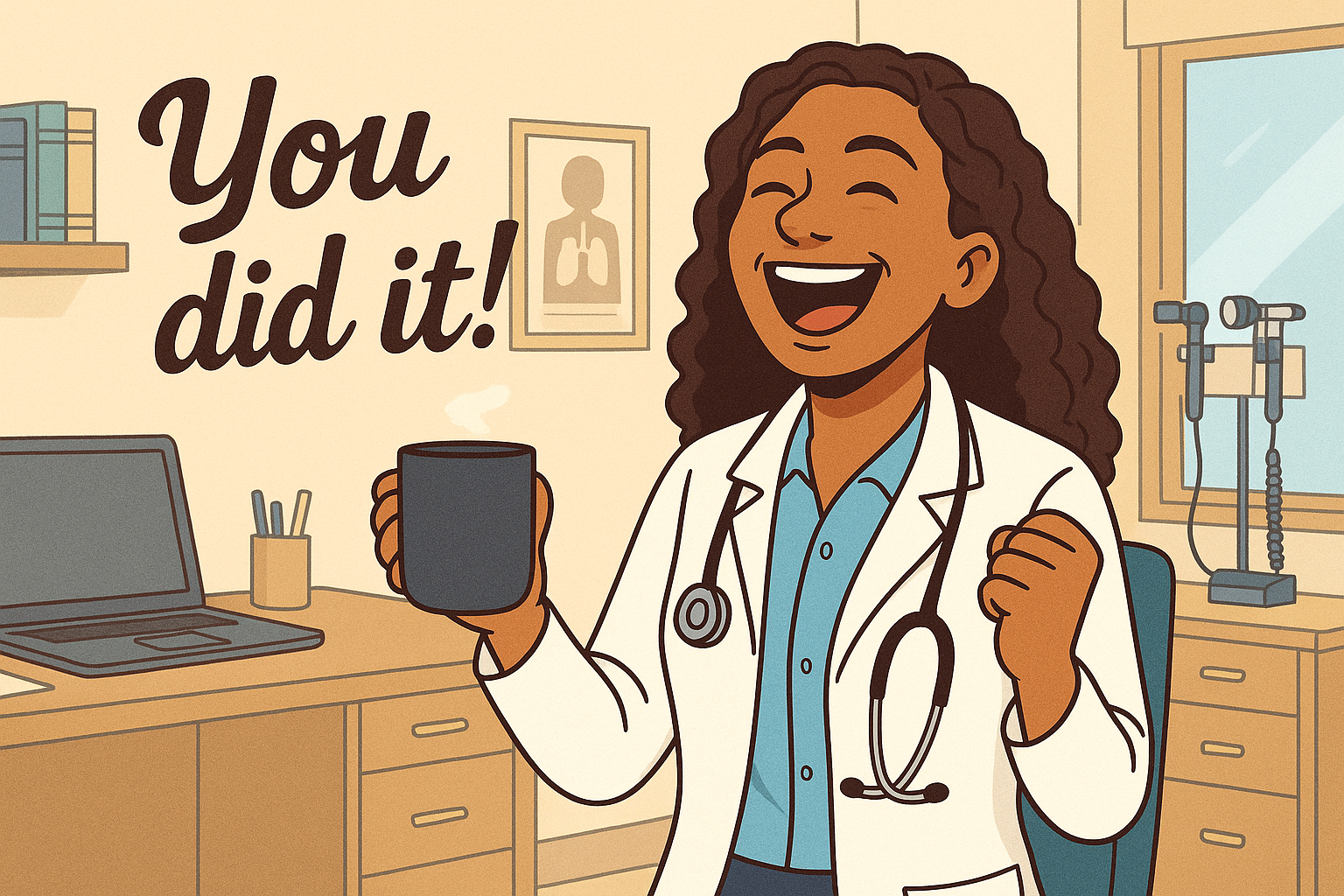By 7131632906
•
June 2, 2025
“I’ll finish that progress note later…” Famous last words of a clinic slowly bleeding revenue. If we had a nickel every time someone said that, we’d have a team of scribes, a full-time massage therapist in the breakroom, and a magical Keurig that brews endless coffee on demand. But while progress notes may not win popularity contests among providers, they are—in no uncertain terms—the backbone of your revenue cycle. That little note you delay writing? It’s not just documentation. It’s a billing ticket. It’s a compliance shield. It’s the key to getting paid and staying out of trouble. So let’s take a journey—tongue-in-cheek, but truth-heavy—through why finishing that progress note isn't just helpful. It's everything. The Progress Note: More Than Just CYA (But Also Definitely CYA) You already know progress notes are part of the patient’s medical record. But in the billing world, they’re not just documentation—they are evidence. Think of them as receipts for the care you've delivered. Without them, your billing department is flying blind and the payers are holding onto their checkbooks with suspicion. Your note is what tells the coder what level to bill. It's what tells the auditor you actually performed the services. And it's what tells Medicare, Medicaid, or Blue Cross that no, you didn’t just spend 40 minutes chatting about WebMD. You delivered bona fide, billable care. And if you're audited and that note isn’t done—or worse, it’s copy-pasted nonsense from 2019—then you’re not just out the money. You might be out a lot of money. Possibly your NPI number, too. So yes, your progress note is most certainly your CYA cape. “If It’s Not Documented, It Didn’t Happen.” – Every Payer, Ever Let’s play a game: You saw a patient, did a detailed exam, provided a diagnosis, and mapped out a killer care plan. But you didn’t chart it. What did the insurance company say happened? Nothing. That’s what they think happened. In fact, they won’t pay you for what you did. They’ll only pay you for what you wrote that you did. And if what you wrote is "Seen. Stable. Follow-up," well…congrats. You’ve just downgraded yourself to a 99212. Hope you enjoyed working for $35. The Billing Cycle: A Delicate Dance That Starts With YOU Let’s follow the billing cycle, shall we? 1.Patient visit: You provide care. 2. Documentation: You chart your progress note. 3. Coding: Someone (hopefully trained and not a frustrated office manager moonlighting as a coder) reads that note and assigns the CPT and ICD-10 codes. 4. Billing: The claim goes out. 5.Reimbursement: You get paid. 6.Denials: Because someone wrote “HTN” and nothing else. Notice how step 2 is everything? If you don’t complete the note, nothing moves. Coders can’t code. Billers can’t bill. And your revenue gets stuck in limbo, like a Netflix show canceled mid-season. Worse, incomplete or vague notes lead to incorrect coding, and incorrect coding leads to denials or underpayments. Denials cost time. Resubmissions cost energy. And underpayments cost you actual revenue, which you’ll never get back. Delay Today, Deny Tomorrow Here’s a fun (read: horrifying) fact—most payers have timely filing limits. That means if your claim isn’t submitted within a certain timeframe—say, 90 days—you don’t get paid. Period. No appeal. No phone call to a sympathetic rep. Just a hard stop. Now, imagine how many practices lose revenue simply because a progress note wasn’t finished on time. One note here, two notes there, and boom—$10,000 in unreimbursed visits. That’s not an exaggeration. That’s Tuesday in a busy primary care clinic. Compliance is Not Optional (Even if You Really Hate Charting) In the post-COVID, audit-heavy world, payers (especially CMS) are watching like hawks. They’re targeting over-documentation, under-documentation, and documentation that looks like it was Xeroxed from another chart entirely. The progress note is your legal proof that: You saw the patient. You provided the service. The level of service matches what you billed. Without that, you’re not just risking non-payment—you’re risking recoupments or fines. And nobody wants to see a note retro-audited three years later and realize the diagnosis was documented in the Plan section, and nowhere else. Common Excuses (And Why They’ll Bankrupt You) Let’s deconstruct some of the classics: "I’ll chart at the end of the day." That’s great, if you only see one patient a day. For everyone else, this is how you end up in charting purgatory at 8:30 p.m. with fried brain cells and vague memories of "the lady with the rash." "The biller can figure it out." Nope. Your biller isn’t a mind reader. They need you to clearly, accurately, and legibly document what you did. They can’t code “probably did a physical.” "It’s all in my head." Unfortunately, heads don’t submit claims. Progress notes do. How to Make Documentation Suck Less Let’s not pretend charting is fun. But you can make it less painful. Use templates—but customize them. Avoid the dreaded "normal exam" for a patient who had a broken femur. Invest in ambient listening. Tools like Suki (integrated with Azalea Health, for example) help you chart while you talk. Chart in real time. The longer you wait, the fuzzier the details. Delegate wisely. Let your MA start the note or preload templates. You focus on the medical decision-making. Finish same day. Even if you’re tired. Even if there’s a cupcake in the breakroom. Trust me, future-you will thank you. Progress Notes: Your Practice’s Revenue GPS Ultimately, that progress note is more than just a check-the-box chore. It’s a map of your care. It’s how your billers, your coders, your auditors, and your future self understand what happened in that room. When done right, it’s also a fast pass to proper payment. When done wrong—or not done at all—it’s a one-way ticket to reimbursement hell. So yes, go ahead and roll your eyes at documentation fatigue. We all do. But don’t skip it. Don't skimp on it. And for the love of your RVUs, don’t put it off until Friday. Final Thoughts (And A Gentle Nudge) Chart like your paycheck depends on it—because it does. Want to streamline documentation and speed up your billing cycle? Consider partnering with tech-forward EHRs like Azalea Health and a knowledgeable RCM team like Sunrise Services. We help make sure that your progress note gets turned into clean claims and real revenue—without the burnout. Now go finish that note. No, seriously—go.






Share On: